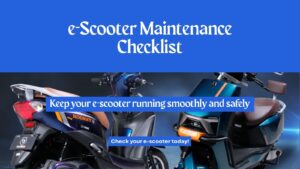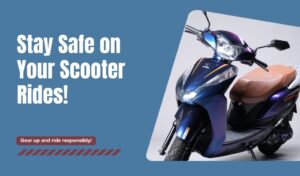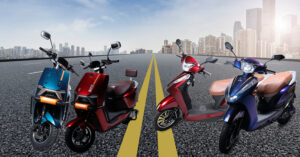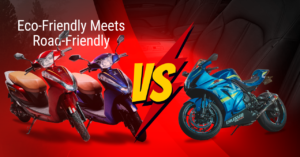Understanding Electric Scooters and Weather Resistance
Electric scooters, commonly referred to as escooters, are designed with specific construction features aimed at enhancing their durability and performance in various weather conditions, including rain. One key aspect of an electric scooter’s ability to withstand adverse conditions is its Ingress Protection (IP) rating. This rating system indicates the level of dust and water resistance, which is crucial for potential riders who may encounter wet weather. An escooter with a higher IP rating, such as IP54 or IP65, is generally better suited for rainy conditions as it offers more robust protection against moisture and water ingress.
The construction materials of electric scooters play a significant role in their weather resistance. Many models incorporate high-quality aluminum or stainless steel frames, which not only provide structural integrity but also resist corrosion. Additionally, manufacturers often use water-repellent seals and coatings to enhance the scooter’s resilience against rain. This means that riders can confidently navigate through light to moderate rain with models designed specifically for such conditions.
For instance, some popular escooter brands offer models with varying IP ratings. When selecting an electric scooter for use in rainy weather, riders should consider these essential factors, including water resistance ratings and construction materials, to ensure a safe and enjoyable riding experience.
Effects of Rain on Electric Scooters and Safety Considerations
The performance of electric scooters is notably influenced by various environmental factors, with rain being one of the most significant. When it rains, the surface conditions of the roads can drastically change, impacting the traction of an electric scooter’s tires. Wet pavement reduces grip, increasing the risk of slipping or losing control. Riders must be aware that, unlike traditional vehicles equipped with advanced stability and traction systems, many electric scooters lack features that can compensate for reduced traction in wet conditions.
Braking distance is another crucial factor that is affected by rain. When the roads are wet, the stopping power of the electric scooter diminishes. This increased braking distance can pose a danger, especially in sudden stop situations where quick reactions might be necessary. Riders should consider increasing their following distance and applying brakes more gradually when navigating through wet streets to compensate for these changes in performance.
Additionally, the electrical components of electric scooters can be susceptible to water damage. It is essential to acknowledge that, while many modern escooters are designed with some level of water resistance, heavy or prolonged exposure to rain can still lead to potential malfunctions. It is advisable for users to check the manufacturer’s ratings for water resistance and to avoid riding through deep puddles where water can splash onto sensitive electronic areas.
To enhance safety while riding in the rain, several precautions should be taken. Wearing appropriate waterproof gear can help keep the rider dry and maintain visibility. Furthermore, using lights and reflectors can ensure that the rider is seen by others on the road. Above all, assessing the weather conditions and choosing not to ride in severe rain are critical measures to ensure a safe riding experience.
Road Conditions and Their Impact on Electric Scooter Use
Electric scooters are a popular mode of transportation, particularly for short commutes and urban travel. However, the road conditions in various weather scenarios can significantly influence the rideability and safety of the escooter experience. When encountering inclement weather, riders must be vigilant about the potential hazards on the roads, such as puddles, mud, and slick surfaces.
Puddles can create not only discomfort but also a safety risk for electric scooter riders. Water accumulation may hide underlying potholes or debris, potentially leading to accidents. Slippery surfaces, particularly after rainfall, can make controlling the scooter challenging. When navigating through puddles, it is crucial for riders to reduce their speed to maintain stability and prevent skidding.
Moreover, muddy or gravelly terrains pose unique challenges. Mud can cause tires to lose traction, increasing the likelihood of falls and loss of control. For electric scooters with narrower tires that are not designed for off-road conditions, the risks are heightened. It is advisable for riders to avoid such paths whenever possible, instead opting for paved or well-maintained roads.
Road infrastructure can also play a significant role in the safety of escooter use during adverse weather. Riders should familiarize themselves with their local roads, as some areas may suffer from inadequate drainage or poor maintenance, further exacerbating hazards. Awareness of areas prone to flooding or hazards is essential for planning a safe route. Additionally, utilizing sidewalks or bike lanes when available can help balance the risks associated with road travel.
In navigating various road conditions, riders should prioritize safety and remain aware of their surroundings. By understanding the limitations and risks of using electric scooters in different weather scenarios, riders can mitigate potential dangers and enhance their overall riding experience.
Best Practices for Riding Electric Scooters in All Weather
Riding an electric scooter can be a convenient and enjoyable mode of transportation; however, adverse weather conditions significantly influence both safety and performance. When riding an escooter in various weather situations, it is essential to adopt best practices to ensure a safe and efficient experience.
Firstly, maintenance is crucial for optimal performance during rainy conditions. Regularly check the brakes and tires of your electric scooter to ensure they are in good working order. Rain can impact braking efficiency, making it vital to keep the braking system well-maintained. Additionally, inspect the scooter’s electrical components, as water intrusion can cause damage. Using a waterproof cover or storing the scooter indoors during heavy rain can protect its electrical systems.
Choosing appropriate riding gear is equally important when riding in adverse weather. Wearing waterproof clothing, including a rain jacket and waterproof pants, will help you stay dry and comfortable. Reflective gear is also recommended, as visibility can be diminished in rainy conditions. A well-fitted helmet is vital for safety regardless of weather, but especially so when road conditions might become slick.
Adapting your riding techniques is essential when navigating wet roads or strong winds. Ride more slowly to enhance stability and reduce the risk of slipping. Avoid sharp turns and sudden stops, as they may cause the escooter to lose traction. Instead, make gradual maneuvers to maintain balance. Additionally, being aware of your surroundings and other road users is crucial—distracted riding can lead to avoidable accidents.
For those who frequently encounter poor weather conditions, it may be worth investing in an electric scooter specifically designed for all-weather use. These scooters often come equipped with better suspension, larger tires, and enhanced waterproofing features. Moreover, planning your routes in advance can help you avoid areas that are prone to flooding or detours that could lead you into challenging conditions.









Leave a reply